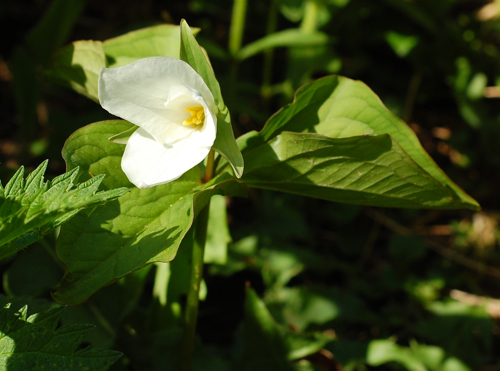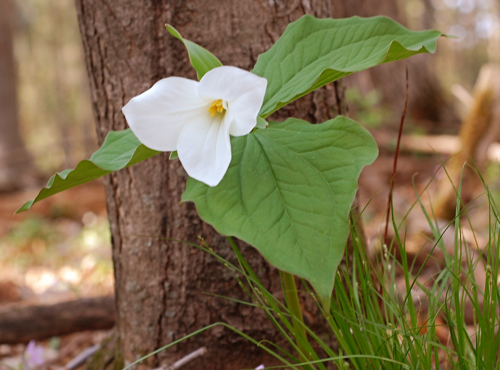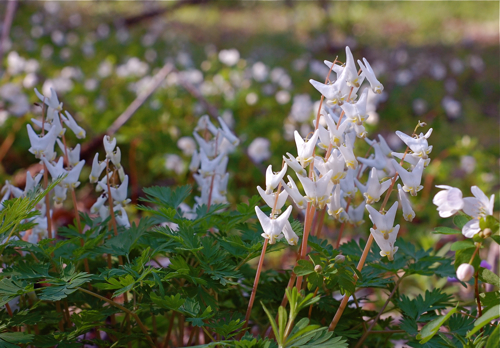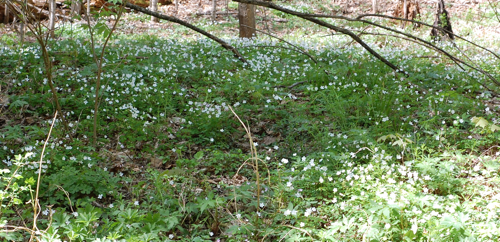 I mentioned earlier that the wildflowers seemed to be going gangbusters this year around our bee yard--perhaps it's a matter of me exploring an area around our bee yard that I usually do not get around to visiting? They are in an area outside of Mr. Neil's property--across the creek as it were. Hans (the groundskeeper) has put up a bridge over the creek making it easier to access. The ravines across the bridge are well used by the locals for horse trails and hunting (at least four deer stands).
I mentioned earlier that the wildflowers seemed to be going gangbusters this year around our bee yard--perhaps it's a matter of me exploring an area around our bee yard that I usually do not get around to visiting? They are in an area outside of Mr. Neil's property--across the creek as it were. Hans (the groundskeeper) has put up a bridge over the creek making it easier to access. The ravines across the bridge are well used by the locals for horse trails and hunting (at least four deer stands).

I've gone over a few times in winter to look for owls but this is the first spring that I've done some serious exploring. There's been a pair of Cooper's hawks calling back and forth so I've crossed the bridge looking for them but have been distracted by wildflowers like the above wild ginger (there also a few white Dutchman's breeches in the lower left corner). When I noticed the wildflowers on Saturday, I saw a TON of large-flowered trillium about to bloom and made a plan to come back the following Tuesday to see them in full bloom.

When I found the wild ginger on Saturday, I was excited that I was able to id on my own. It's one of those flowers I've seen in the couple of wildflower books and thought, "Wow, that's an interesting flower." It looks kind of like an orchid, it's purplish, and the flower hides beneath the leaves, low to the ground. When I came back, I wanted to bring someone with me to enjoy the show. I was planning to come back on a Tuesday so that ruled out most of my friends--not everyone has the odd schedule I do. I thought about Non Birding Bill (take a personal day from work) but then realized that bringing my man in the woods to look at tiny flowers was probably not the best thing. But I did think that Lorraine has an odd schedule so I invited her along. She hadn't been across the bridge very much either so I was excited to show her what was there (plus with her love of horse back riding, I figured she would be interested in the horse trails).

The trillium show was spectacular--it was as if we were in crazy trillium land. Pretty much every thing that's white in the above photo is trillium (note the little blurry dots of white in the background). It was just underway too, several more trillium buds still had not burst open yet. The more I learn about trillium the more I like it and I marvel that it's managed to survive at all. Picking it can kill the plant, deer love to browse on it so if you have too large a deer population, that can be detrimental to a trillium patch, it can sometimes take up to seven years for a plant to bloom and it needs ants to spread the plant--it's crazy. I'm sure a survival strategy that worked great before European settlement of our continent. It's amazing to find such a huge patch of high maintenance flowers in the woods.

The spring beauties were winding down but a few pink ones could still be found. Below are some others that I'm posting, more so I can have a record of the native wildflowers I have found (it helps me learn):

Another flower I was hoping to find in large droves was the yellow trout lily. Their mottled leaves were carpeting patches of the forest floor. We saw quite a few blooming but the leaves suggest thousands more are still to come.

I love this shot, doesn't it look like the flower is holding its arms out and yelling, "Ta Daaaaaaaaaaa!" I was scanning some of the hills with my binoculars to make sure we weren't missing any flowers when I noticed a trout lily that was white--another species of trout lily--who knew. I kind of hoped it was a dwarf trout lily, but that only grows in one spot in Minnesota and nowhere else so this is a regular white trout lily...still it added to our wildflower list.

Wood anenome was all over in huge bunches, highlighting the forest floor.

This is wild phlox (with a tiny spring beauty in the center and an unopened trillium in the lower right corner).

This is one I had to look up and the noticeable leaves are very cool--it's called a sharp-lobed hepatica.

The bloodroot was almost finished blooming but a few were still going.

The Dutchman's breeches were also about finished blooming but a few patches could be found in the shadier areas. We did note that we didn't see any of our honey bees on these flowers. The one honey bee we saw was on a dandelion (non-native). This is probably because honey bees are non-native and are not attracted to our native flowers. They didn't evolve together and the native flowers grew to attract some of our native pollinators like bumblebees.

And I found one lone Jack in the Pulpit. These were all over the place last year so I can't wait to see how predominate they will be here in the next few weeks. So, after Lorraine and finished the walk on the other side of the bridge, I suggested we check around a different part of Mr. Neil's land and perhaps check out some of the nearby state land. We found a few wildflowers but most of it looked like this:

Good old garlic mustard. We've made attempts to rid this before after a blog reader pointed it out in one of my photos years ago. As we walked we noticed creeping charlie, buckthorn and dandelions--all non-natives. Lorraine wondered, why are there so many cool and different flowers across the creek and all we have over hear is garlic mustard. After seeing the wonderland across the creek, we may have to take some active measures. I've read that trout lily can be a good thing to plant to combat garlic mustard. You can also purchase it from reputable nurseries. Perhaps we will have to redouble our efforts towards the buckthorn and garlic mustard. Anyone have any tips for dealing with garlic mustard (outside of a controlled burn)?


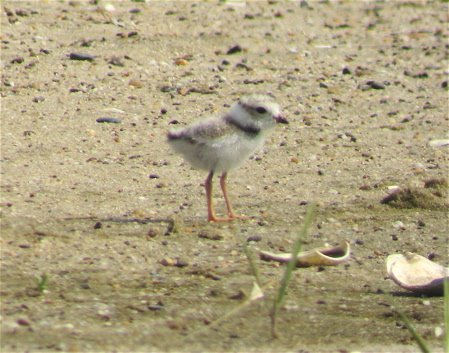
 I mentioned earlier that the wildflowers seemed to be going gangbusters this year around our bee yard--perhaps it's a matter of me exploring an area around our bee yard that I usually do not get around to visiting? They are in an area outside of
I mentioned earlier that the wildflowers seemed to be going gangbusters this year around our bee yard--perhaps it's a matter of me exploring an area around our bee yard that I usually do not get around to visiting? They are in an area outside of 












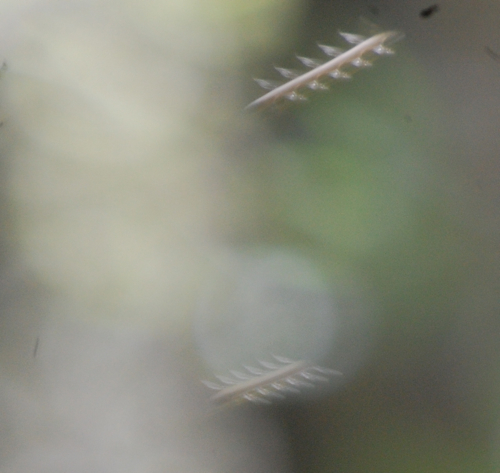 I digiscoped the strangest photo of my bees yesterday. I'm not sure what setting I had the camera on but they look like odd little space ships.
I digiscoped the strangest photo of my bees yesterday. I'm not sure what setting I had the camera on but they look like odd little space ships.
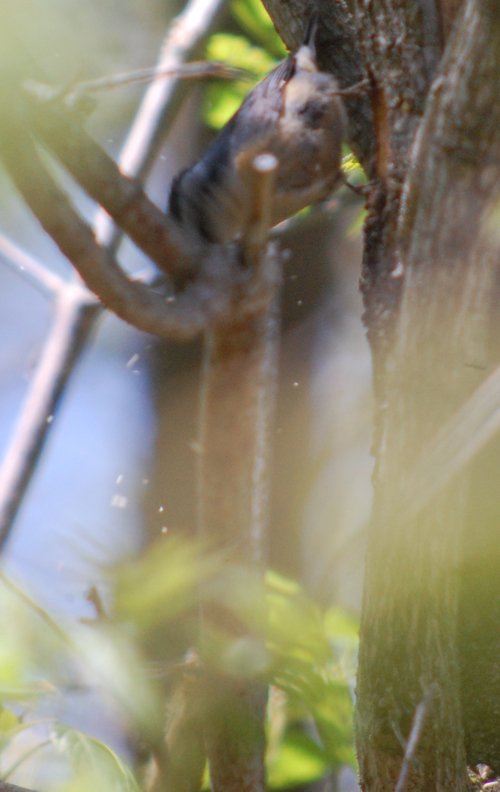
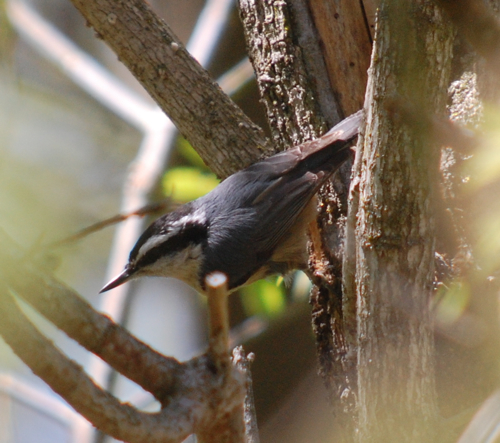
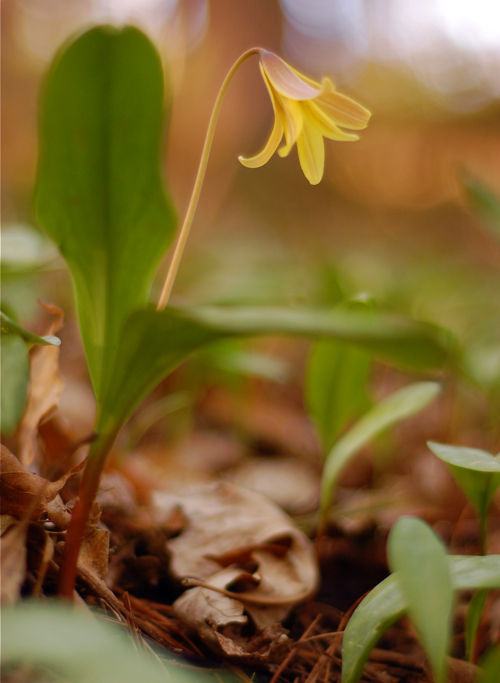 I'm going to have to park myself at my beehives at some point next week. So many native wildflowers are about to erupt. Many are already blooming but there were several sprouting yesterday. If it's sunny the first part of next week...the woods will be dominated by these delicate and brave first flowers of the spring like this trout-lily (so named because the spots on the leaves resemble the coloring of a trout.
I'm going to have to park myself at my beehives at some point next week. So many native wildflowers are about to erupt. Many are already blooming but there were several sprouting yesterday. If it's sunny the first part of next week...the woods will be dominated by these delicate and brave first flowers of the spring like this trout-lily (so named because the spots on the leaves resemble the coloring of a trout.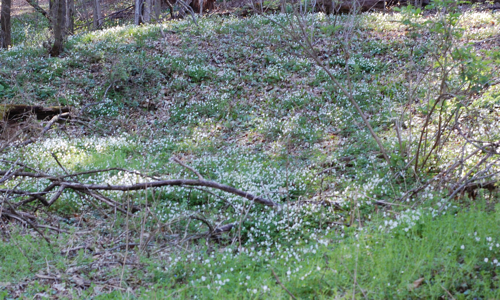 This spring has been spectacular for wildflowers and the woods around the beehives are covered in them. We've planted some natives and a two years ago, I bought some clearance large-flowered trillium to add in. I was inspired to encourage more near Mr. Neil's house because you can find
This spring has been spectacular for wildflowers and the woods around the beehives are covered in them. We've planted some natives and a two years ago, I bought some clearance large-flowered trillium to add in. I was inspired to encourage more near Mr. Neil's house because you can find 